How to prepare oat seeds for sowing, plant them correctly and grow a rich harvest
At the beginning of the 21st century, the area under oats in the world has significantly decreased. However, the situation in the Russian Federation is gradually stabilizing. Domestic manufacturers have again stepped up this area thanks to the sanctions. They gave impetus to the development of Russian animal husbandry, as a result, there was an increased need for high-grade feed. In the last 10 years, Russia has held the 1st place in the world in terms of gross oats harvest. We will tell you in detail how to prepare oat seeds for sowing and grow a rich harvest.
The content of the article
Application of oats
This cereal grown mainly for grain... But its value also lies in the fact that it gives high-quality green mass, so it can be harvested for the winter as hay and used to enrich the soil and control weeds.
As cereal
About 70 varieties of oats are intended for obtaining high-protein, nutritious, rich in vitamins and microelements grain... It can be food and fodder.
Oats are valuable for human nutrition, as they contain slow carbohydrates that give a long-lasting feeling of fullness. Oats are irreplaceable in the diet of sick and weakened people, children and athletes.
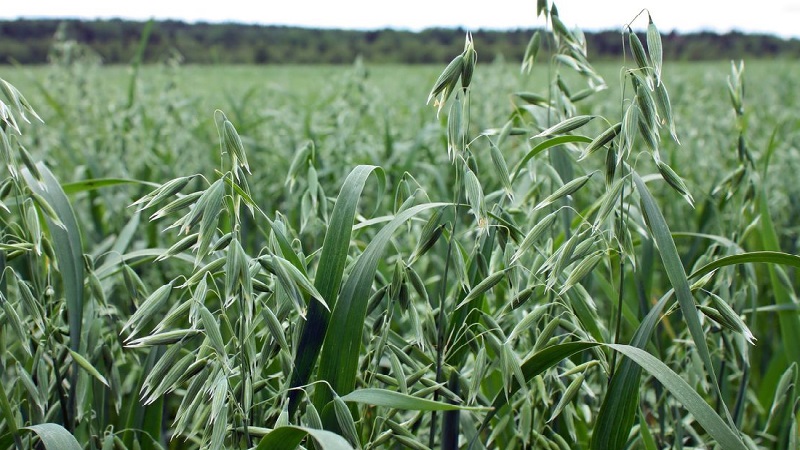
Agricultural animals and birds are given this cereal as the main feed.... It is inexpensive and has a long shelf life. It is used as a monoculture in feeding as it contains all the essential nutrients.
Oats provide a rich, tender green mass that is suitable as feed ruminant in winter, so farmers harvest it for hay.
As a siderat
Oats are indispensable on fallow lands, in the development of virgin lands, for enriching the soil with trace elements and minerals... In this case, it is planted in early autumn, and with the first snow in the stage of growing green mass, it is plowed into the soil. In spring, such a field is ready for sowing any crops, especially cereals and vegetables.
Like green manure oats can be planted from spring to autumn 2-3 times per season... When a height of 20-25 cm is obtained, the plants are cut and plowed or left on the soil surface.
If sowing is carried out in early spring, then in May, after cutting siderat, the field is suitable for any crops - the weeds will be crushed by the powerful root system of oats.
Where does oats grow
This valuable cereal is grown everywhere - in Europe, Asia, America, Australia, Africa.
Leading manufacturers:
- Russia;
- Canada;
- Poland.
Largest importers:
- USA;
- China;
- Mexico.
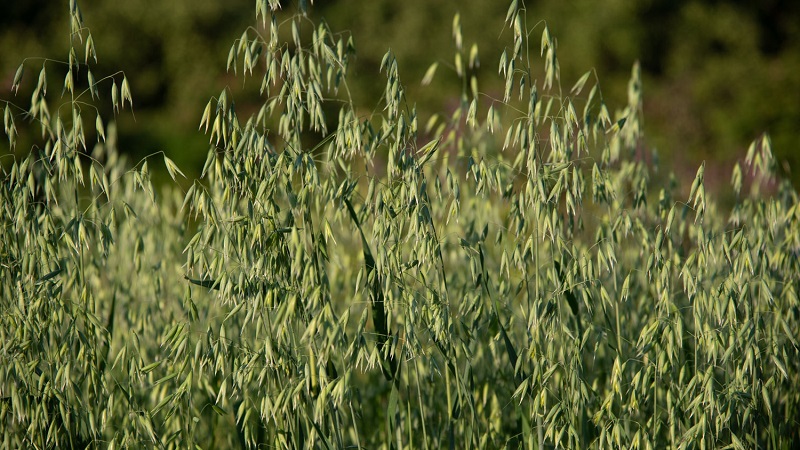
The United States also grows its own oats, but it is not enough for the needs of farmers... The main supplier for them is Canada. From year to year, China is rapidly increasing the volume of purchases of this cereal, for which the main supplier is Australia. If Russian producers are able to provide not only the domestic market, but also the foreign one, China will buy oats from us. The Russian Federation is on the 9th place in the list of exporters of this culture.
Reference. In our country, the area of cultivation is from the central regions to the Far East, from the polar territories to the North Caucasus.
Types of sowing oats
By the nature of the grain and the structure of the sowing panicle oats happen:
- spreading;
- naked;
- one-maned.
The State Register of Approved Varieties contains more than 100.
Sowing oats are grown on feed and food grain, green mass, hay, like green manure.
Winter
The main feature of these varieties is that their growing season lasts 2/3 years.... Winter oats are distinguished by early and friendly germination; harvesting ends in the middle of summer.
The best varieties, their characteristics and average yield are presented in the table:
| Name | Characteristic | Productivity, c / ha |
| Adamo | White grains, long ripening period | 40 |
| Antaeus | Height - up to 1.0 m, crumbling less than 3%, rich green mass | 60 |
| Belarusian naked | Fine-grained, high in protein, resistant to many diseases, food grade | 50 |
| Show jumping | Height - up to 1 m, large grains, drought resistant | 40 |
| a lion | Height - up to 0.6 m, scaly spikelets | 60 |
| Lefty | Ultra-ripe, high protein grains | 40 |
| Hello | Spikelets with a waxy coating, high resistance to smut disease | 60 |
| Trotter | Early ripening, spikelets are scaly, waxy | 45 |
| Strigunok | Scaly, spikelets scaly, waxy | 60 |
| Mascot | High nutritional value, elongated and thickened grains | 75 |
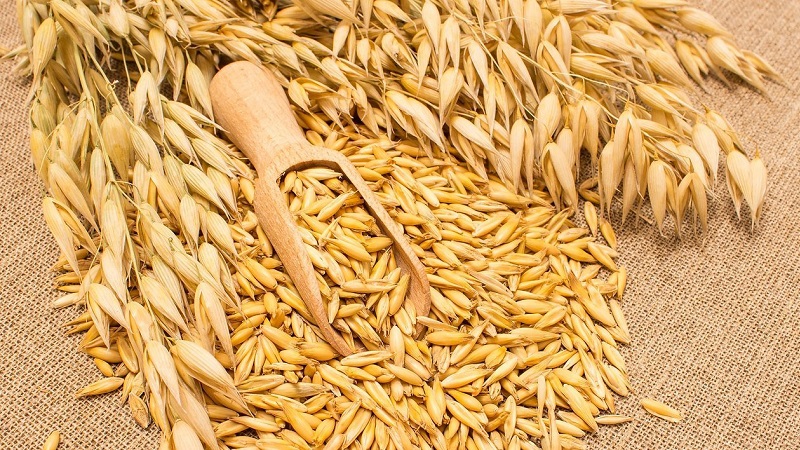
Spring
Most often it is feed oats., not demanding for heat, with a wide geography.
The best varieties and their features are described in the table.:
| Name | Characteristic | Productivity, c / ha |
| Gait | Slightly elongated grains with high nutritional value | 75 |
| Fighter | Coarse, drought-resistant, demanding to care, drooping spikelets, covered with fine hairs | 55 |
| Friend | Resistant to many diseases, large light panicle, thickened grains | 70 |
| Irtysh | Resistant to frost and drought, tall, erect, coarse | 70 |
| Merlin | Demanding to care, scaly spikelets | 80 |
| Steed | Drought and disease resistant, with a yellowish panicle | 80 |
| Solomon | Tall, erect, fine-grained, resistant to disease and drought | 40 |
The choice of oat variety is determined weather and climatic conditions, soil acidity, direction of the economy. It is best to use breeding zoned.
Preparing oats for planting
Seeds are sorted into the first (giving good bushiness and large yields) and the second grains (less productive)... To increase the energy of germination and germination, they are warmed up in the sun at a temperature of + 15 ... + 20 ° C for 3-4 days with the use of ventilation. This procedure can also be done in dryers. It is especially important in those areas where the oats do not have time to mature in the ear before harvesting.

Etching
Etching is carried out to destroy pathogens of fungal and bacterial diseases of grain... There are two etching methods: dry and semi-dry. The first is carried out with seeds with a moisture content not higher than 14% and no later than 2-3 months before sowing. Thus, the grain receives full protection and remains germinating.
If the humidity reaches 17%, etching is carried out in a semi-dry way. 2-3 days before sowing. The grain is treated with a liquid solution with adhesives for better enveloping.
Drugs approved for use:
- "Granosan" - 1.5-2 kg / ton of seeds for 8-10 liters of water;
- against dust smut - for 1 part of 40% formalin 80 parts of water, 30 liters of the resulting solution per 1 ton of seeds;
- Vitavax - 2.5-3 kg / ton of seeds.
Sowing time
Sowing dates for winter oats - immediately after harvest, at the end of August and before the first days of October (depending on the region). Then, before severe frosts, the plants have time to build up enough green mass.
When to plant spring oats? Spring planting is carried out as soon as the snow melted... This allows the grain to absorb moisture and take root better in heavy, damp soils.
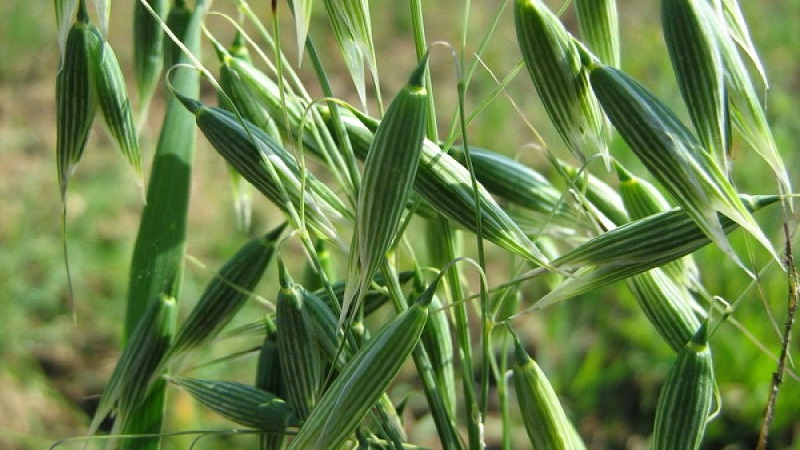
In the southern regions and in the foothills of the North Caucasus, sowing begins in late February - early March.... In the central regions of the Russian Federation, steppe and forest-steppe zones - in mid-April. In the Trans-Urals and Siberia - in May.
Important! First of all, plots are planted on which the seed will ripen. The work is completed in the shortest possible time - 2-3 days to ensure a friendly return of the harvest.
The best predecessors according to the rules of crop rotation
The soil is suitable for planting after row crops, especially corn and potatoes... Oats grow well after spring and winter wheat, legumes.
It is highly undesirable to sow this crop after beets.since there is a great danger of being hit by common pests. You should not plant oats in one place for two years in a row.
This cereal - a crop that closes the crop rotation... It is not picky about the soil, effectively fights weeds, responds well to fertilizers. Oats cope with the role of the first crop in virgin lands and peatlands.
Note! Oats produce good yields when grown first or second steamed and are considered an ideal precursor for cereals and grains.
Sowing grain
In modern agronomy, there are three optimal methods of sowing grain.:
- cross;
- solid private;
- narrow-row.
The last is considered the most progressive - with a row width of 7-8 cm... The main thing is to maintain the uniformity of seed placement. Otherwise, there is a high probability of thickening of individual areas, lodging of plants and loss of a significant part of the crop or its quality.
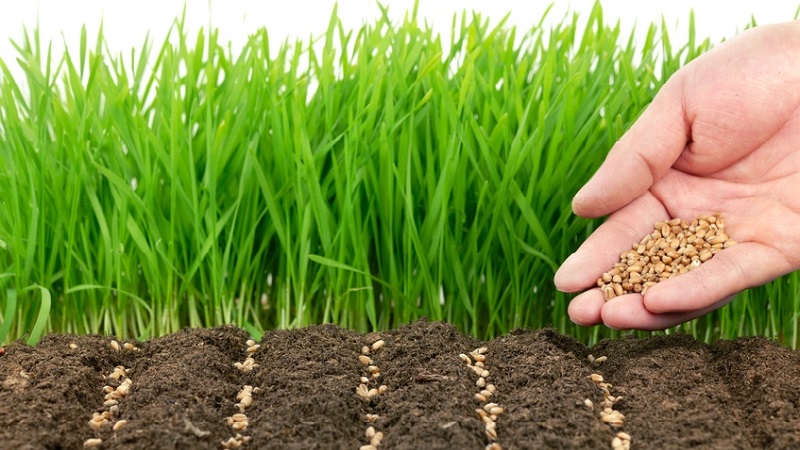
Seeding rates
Indicators depend on soil, climatic and agrotechnical conditions.
Approximate seeding rates per 1 ha in kg:
- Non-Black Earth Region, Far East - 220-280;
- Central Black Earth Region - 200-260;
- Volga region, South Ural - 180-240;
- Western Siberia - 240-260;
- Eastern Siberia - 200-240.
In terms of weight, the norms are indicated with large deviations., since they depend on the mass of the grain and its germination
Embedment depth
The most important parameter is soil moisture... Therefore, in arid regions, the planting depth is higher than in moderately and highly humid regions. Farmers grow oats even in permafrost conditions in Kolyma. At the same time, it is planted no deeper than 1.0-1.5 cm.
Approximate indicators depending on the region (in cm):
- Non-black soil: clay soils - 2-3, loams - 3-4, light soils - 5-6;
- Central Black Earth Region, Volga Region, South Urals - 6-8;
- Western and Eastern Siberia - 4-8;
- Far East: loam - 4-5, sandy loam - 5-6.
With poorly heated soil in the first days of sowing, the planting depth is reduced, in the following days it is increased as the soil warms up.
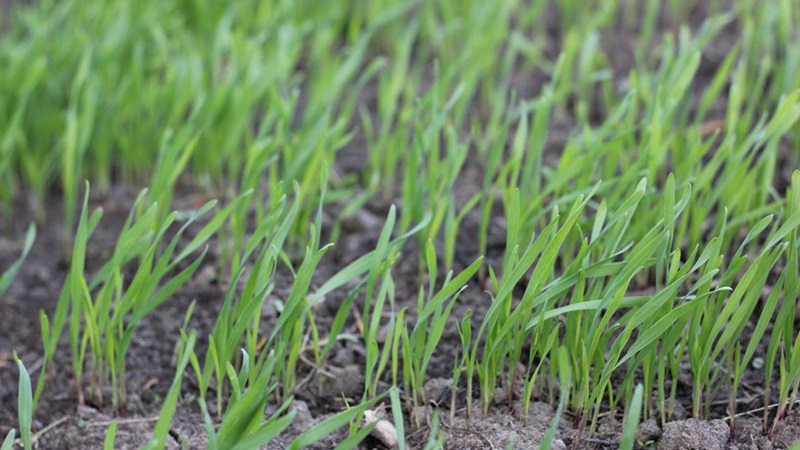
Growing technology
Oats are picky about agricultural technology. Crop care:
- Rolling - for better grip of the grain with the soil.
- Harrowing before germination - for the purpose of undermining weeds and loosening the soil crust.
- Harrowing after germination - for the destruction of annuals.
During the tillering period, when the plant is resistant to herbicides, the weeds are treated with preparations: "Lontrel-300" 30% - 0.15-0.65 l / ha, "Dialen" - 3 l / ha. At the same time, to exclude lodging of crops, they are treated with retardant "CeCeCe460" at the rate of 3-4 kg / ha.
They fight pests and diseases in a timely manner to obtain a bountiful harvest oats, do not damage crops.
Features of growth and development
Oats sprout very quickly... First, embryonic roots are formed, which after a week reach a length of 15-20 cm. The stem is twisted when it appears above the ground; unfolding, gives the first sheet. The germination phase ends with 3-4 leaves.
The next stage is tillering... If the feeding area is large, oats form up to 6 stalks, however, this affects the quality of the grain - it turns out to be smaller, the panicle is weak. When a thickened node appears in the lower part of the plant, booting begins with a simultaneous growth of the panicle. It moves quickly inside the sheet.
Bleeding is fixed with the exit of 1/3 panicle, flowering begins within a week and lasts a maximum of 7-10 days. The grains are formed unevenly: when the first ones are already poured, the lower part of the panicle may still bloom. Fruit filling stops when the moisture content is 20-25%. On average, this process takes 25-30 days.
Diseases and pests
Oats are a tasty crop for many insects and bacteria... Timely plant protection measures not only preserve the harvest, but also improve the quality of the grain.
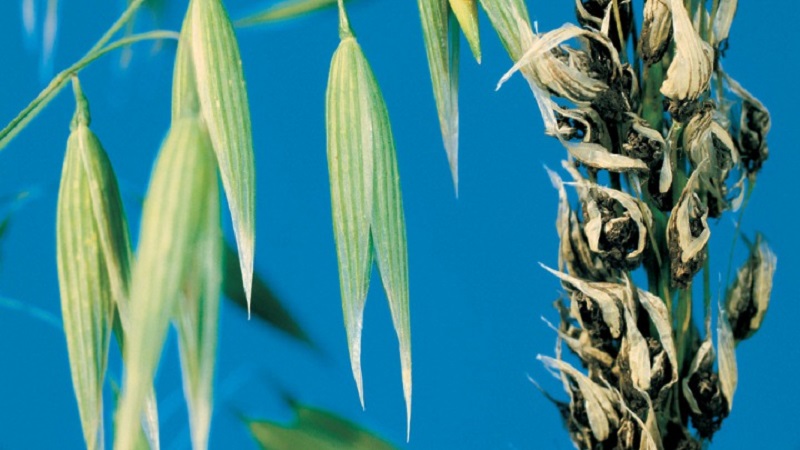
Common diseases of oats:
- brown and yellow rust;
- septoria;
- powdery mildew;
- stem rust;
- reddish-brown spotting.
To combat diseases, drugs are used "Rex", "Bayleton", "Bumper", "Impact", "Folicur". It is important to detect the disease in time and have time to process the plants before the spilling phase.
Pests:
- kuzka bread beetle;
- bread beetle larvae;
- cereal fly;
- bread drunk.
For pest control, drugs have shown the greatest efficiency "DecisExtra", "Karate", "Senpai", "BI-58", "Almetrin".
Yield
Oats are inferior in yield to other cereals... On average, it is 20-25 c / ha. However, modern breeding varieties, with proper agricultural technology, yield up to 70-80 c / ha. However, many farms plant older varieties of oats. The goals of growing affect the yield indicators: in many regions, oats are planted as green manure, for hay, for green fodder, without bringing them to technical ripeness.
Harvesting oats
When the grain reaches a moisture content of 17-20%, direct combining is carried out... All oats are harvested in a short time - a maximum of 4-5 days. Otherwise, the grain will begin to crumble quickly, since the yield of this cereal is friendly.
At the end of the harvest, the oats are dried to a moisture content of 14% at a temperature not higher than + 45 ° C, in order to prevent decay, adhesion or fungal infection. Only after drying is the grain put into storage.
Conclusion
Oats provide human nutrition and forage for farm animals. The production cost of oats is low, and its demand in commodity markets is stable.
Subject to the technology of preparation, sowing, care and harvesting, this cereal allows you to get high yields per unit area. Oats are susceptible to diseases and pests, so it is important to carefully monitor the cleanliness of the crops and, if necessary, carry out timely processing.